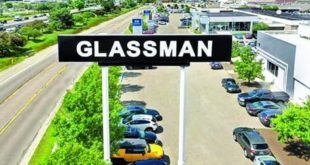
Leasing, which comprises nearly one-third of new-vehicle sales, dropped in April to the lowest levels since 2015 as the coronavirus pandemic collapsed the top two leasing markets in the country and automakers saturated the market with loan incentives. Rising customer demand prompted automakers to pull back on many of those programs, but leasing levels remain well below normal.
Leasing levels fell to 24 percent in April, Experian said, down from 30 percent in April 2019. The last time the levels were below 25 percent was in the fourth quarter 2014.
Discounting auto loans is cheaper for automakers than leasing, said Melinda Zabritski, Experian’s senior director of automotive financial solutions, so pulling back on leasing for the near-term makes sense. She said it is “hard to tell” when normal levels will return. “I have a hard time speculating because this is so unprecedented,” Zabritski said.
As leasing levels dropped, shares of 0 percent-interest, 84-month loans as part of total auto originations rose sharply in March, peaking at 22 percent in the week of March 29, J.D. Power said. Steeply incentivized auto loans have been steadily falling each week since, comprising only 12 percent of originations in the first week of June.
Leasing levels rose gradually during this time but hit a plateau at 25 percent of auto originations for three consecutive weeks.
Ken Sopp, CEO of Credit Union Leasing of America, said business fell 80 percent in April in the nation’s top two leasing markets — Michigan and New York. In other regions, the shift in incentive activity is owed to strong automaker inducements, leveraged to drum up demand for new vehicles during the first few weeks of the crisis.
“The 84/0, while it may be good marketing, isn’t necessarily the best product for the consumer,” Sopp said.
Longer loan terms mean a longer pay-down period for consumers, which increases the odds of a default. Credit Union Leasing of America, which manages the leasing business of 29 credit unions in 45 states, typically excels with vehicles that receive little automaker support. Lower-than-usual leasing also will crop up as inventory woes in three years when dealerships expect off-lease vehicles to return to the lot.
Markets with high rates of leasing are still slow to open up, and a large number of buyers are still sitting on lease extensions, said Mike Buckingham, senior director of the auto finance practice at J.D. Power. Certain brands also may face inventory issues from production slowdowns in response to the pandemic.
While leasing levels are down now, Buckingham believes the market will come back when consumers are ready.
“I don’t know if we’ll see 30 percent in the next month or two, but we know we’ll come back to 30,” he said.


